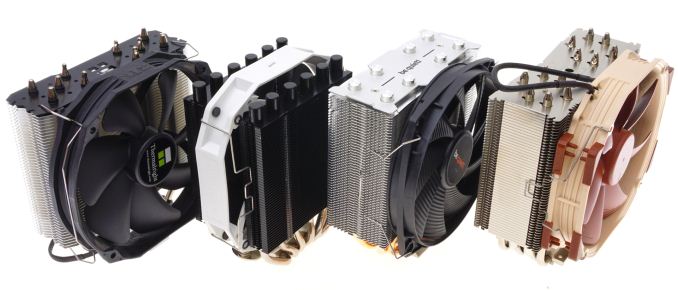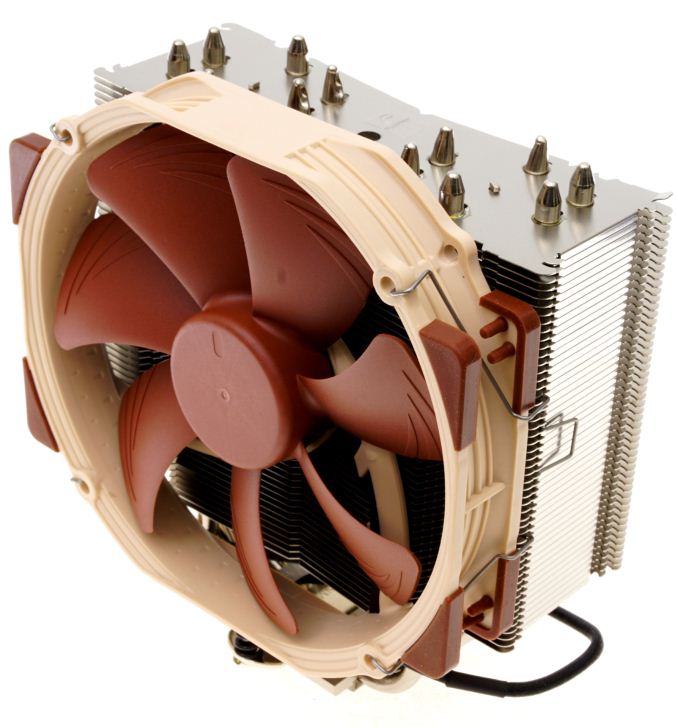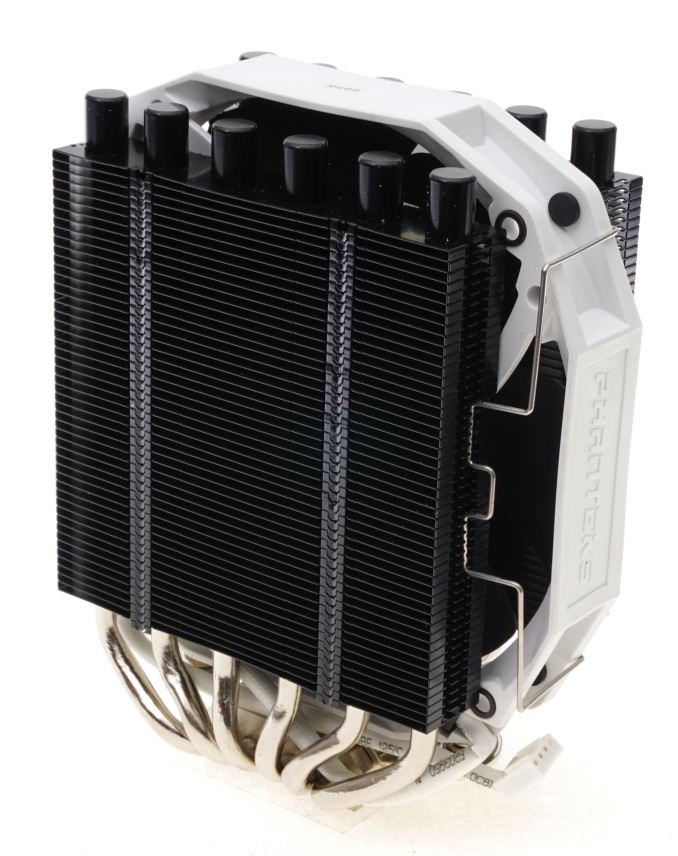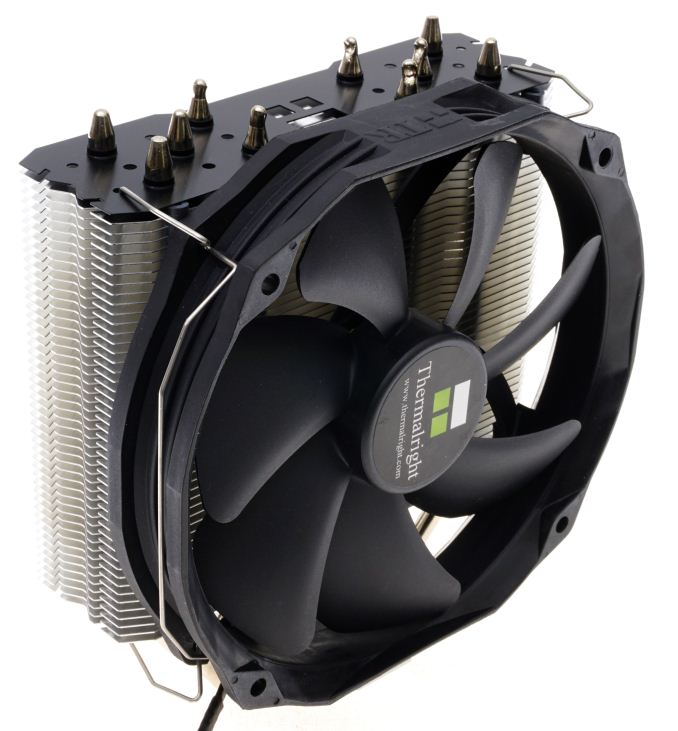The 140mm Slim Tower CPU Cooler Roundup: Thin & Light Done Just Right
by E. Fylladitakis on May 24, 2017 8:00 AM EST- Posted in
- Cases/Cooling/PSUs
- be quiet!
- Noctua
- Phanteks
- Cooler
- Thermalright
Final Words
Although 140 mm tower coolers are slightly restrictive in their compatibility – essentially requiring the user to own a case that is wide enough to fit them – their close pricing and superior characteristics relative to 120 mm tower coolers makes them the sensible choice for every enthusiast that owns a compatible case. The four coolers in this review are but a small sample of the “slim” 140 mm coolers available today, comprising of the higher quality and most popular models.
Out of these four coolers, Noctua’s NH-U14S stands out by pretty much every metric. It is a little larger than the other three coolers and, even though the difference is small, extra caution is required when checking whether it can fit inside a case. At $65 it's also more expensive than the other three models by around 30% ($15), which makes it substantially more expensive. Nevertheless, the thermal performance of the NH-U14S is significantly superior as well, especially when the cooler needs to handle a high thermal load. This higher thermal performance coupled with Noctua's excellent reputation for their after-sales support gives the NH-U14S an edge over its competition, regardless of its higher retail price.
The Phanteks PH-TC14S was the oddity of this review. Instead of doing a single tower cooler, the designer’s solution for a “slim” design was a greatly cropped version of the monstrous PH-TC14PE. The narrow and thin towers hardly cover the effective airflow area of the 140 mm fan that is sandwiched between them, and the positions of the heatpipes do not appear to be optimal. Still, the PH-TC14S performs very well overall, better than what we originally anticipated when we physically examined the cooler. The lack of mass places it at a disadvantage when it needs to deal with very high thermal loads, but it will be more than sufficient for the average gamer and amateur overclocker. It also is the only cooler that is currently available with black fins, drawing the attention of those who prioritize aesthetics over small performance differences.
Thermalright’s True Spirit 140 Direct was the surprise performance of this roundup review. Nothing foretold that the otherwise simple-looking cooler could give the competition such a push. The direct contact design of the True Spirit 140 Direct grants the cooler excellent energy absorption efficiency, giving the cooler a significant performance advantage that is especially apparent when the thermal load is low. This design makes the True Spirit 140 Direct particularly efficient when dealing with low thermal loads, i.e. modern efficient CPUs that will not be significantly overclocked. It is not as efficient when it has to deal with a very high thermal load, as it cannot dissipate the amassing thermal energy as quickly as Noctua’s behemoth can, but even then the performance figures remain very good. Its sound pressure levels are relatively low as well, making it a sensible choice for users who want a relatively simple, efficient, low noise product.
Finally, the Be Quiet! Shadow Rock Slim is not the best overall performer of this roundup review, but we feel that it is right where the company wanted it to be. Its thermal performance is competitive, rivaling that of every other cooler in this roundup, and even coming close to its much larger and considerably more expensive counterpart, the Dark Rock Pro 3. At the same time, the sound pressure level readings of the Shadow Rock Slim are the lowest of this review, even if only by a little, making it the quietest of the coolers. Overall, the Shadow Rock Slim is a balanced, high quality cooler that should appeal to the widest user’s base in comparison to the other coolers of this review. If the company were to bring the price of the cooler down even just a bit, then the competition would have a lot to worry about.















74 Comments
View All Comments
Ian Cutress - Wednesday, May 24, 2017 - link
Are you measuring the heatsink, or the product? A lot of these companies go to great lengths to 'optimize' their fan design.fanofanand - Thursday, May 25, 2017 - link
I see this same type of comment applied to GPUs and cases too. Products should be tested exactly as they are sold. If a company wants to get their price under $x and they skimp on the case fans to do it, the reader should know that so they can price it appropriately by adding in the cost of good fans. Conversely if a company's price is higher but out of the box has the performance you would achieve from changing out the fans then that should be acknowledged and the reader be made aware. The way Anandtech does it is absolutely appropriate and allows the reader to get an accurate picture of what they are getting for the money.snarfbot - Thursday, May 25, 2017 - link
right, and like i said that is good, but when it comes to evaluating what product is best at specific noise levels the picture becomes less clear.isolating the performance of each cooler by using the same fan on each would help in that regard, and would be a cogent data point regardless imo.
in your testing methodology page you didnt mention whether you were using the boxed tim, or something like arctic silver for all products, as it is commonly accepted as the standard by which other tims are measured against in tech circles. i prefer mx-4, because its easier to use, but its good to have a standard to measure against.
you might do that to eliminate one variable from your test, and the same argument could be made for using one common fan across the board for that reason.
Infy2 - Wednesday, May 24, 2017 - link
Some comment on the difficulty of installation would be helpful. The inlcuded Noctua cooler has repuation of being easy to install while the Thermalright is not.gradoman - Saturday, May 27, 2017 - link
Late reply, but Thermalright's installation method is pretty simple these days. I'd say a half-step below Noctua's mounting system, but you're not going to be struggling to pin down sprung screws.https://youtu.be/EDRNBCH1lRA?t=1760
sheh - Wednesday, May 24, 2017 - link
Would be interesting to know their weights.Sivar - Wednesday, May 24, 2017 - link
Thank you for the useful, thorough review!Daisho11 - Wednesday, May 24, 2017 - link
It would be interesting to see how these heatsinks perform when they all use the same fan. Maybe test them all with the Noctua fan or some other popular variant (Corsair, GentleTyphoon, SanAce, etc.)Lolimaster - Thursday, May 25, 2017 - link
The efficieny and temps of Ryzen are so nice that you don't need AIO or big tower coolers, most of the time the stock cooler is more than enough, and it's silent :DI think the best cooler for Ryzen is the Coolermaster Hyper 212X, everything else is basically overkill.
Lolimaster - Thursday, May 25, 2017 - link
This will probably be nice for Ryzen 9 monsters.